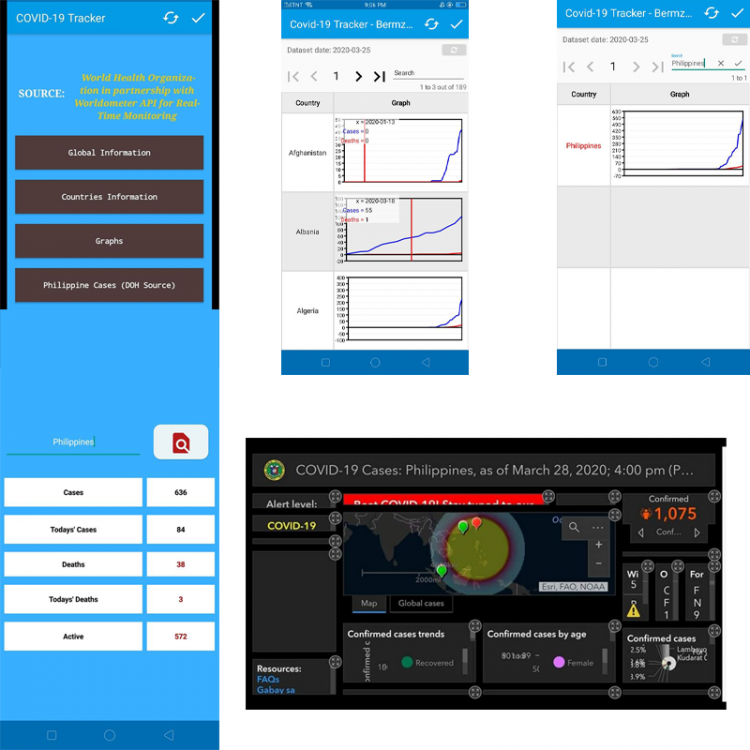
Microsoft product teams worked to find any further efficiencies to free up Azure resources for other customers.
MICROSOFT CORONA TRACKER INSTALL
“We made some pretty profound changes in order to do the right thing, and we did them under a very short time frame,” Simms said.ĭatacenter employees began working in round-the-clock shifts to install new servers while staying at least six feet apart. “So the work that we had to do to get through the initial surge in demand and free up capacity for our customers to run critical health and safety workloads was also unprecedented.”
MICROSOFT CORONA TRACKER SOFTWARE
“The scope and the scale of the response to COVID-19 was completely unprecedented, in terms of how much of the world went digital inside a month,” said Mark Simms, a partner software architect who helped manage the COVID-19 response across Azure.

In a Microsoft quarterly earnings call on April 29, the company said those hardware supply chain issues largely began resolving themselves late in the quarter that ended in March.
Around the same time, manufacturing issues in China and Southeast Asia due to the global health pandemic created a temporary disruption in the supply chain for certain datacenter hardware as dramatic spikes in usage began challenging computing capacity in some regions. Computing hardware to protect against demand spikes is stockpiled in warehouses around the globe, ready to be deployed to where it’s needed most.īy March the epicenter of that demand was in Europe, as countries such as Italy and Spain imposed nationwide lockdowns to slow the spread of the coronavirus. With the more than 60 datacenter regions around the globe - including three new regions announced this past May in Italy, New Zealand and Poland - Microsoft can shift traffic if a natural disaster or power outage affects capacity in one part of the world. “This really helped us understand how do we get patients to the right care at the right place in the right amount of time and also to understand the needs for personal protective equipment across the state - who had what and where were the gaps,” Henry said.Ĭloud providers like Microsoft Azure are by their nature designed to expand and scale quickly and meet elastic demand. Within 12 days, the state was able to launch the Washington Healthcare Emergency and Logistics Tracking Hub (WA HEALTH) built on Microsoft Power Platform, which runs on Microsoft Azure. Meanwhile, employees worked across the company to ensure Azure services could continue to scale and to help customers and organizations on the front lines of the pandemic response address their most urgent needs. Suddenly, Microsoft 365’s teamwork hub that allows people to meet, chat, call and collaborate online was seeing unprecedented usage. In April, that number climbed to 4.1 billion meeting minutes in a single day.

“We all do surge planning and we cache equipment but this exceeded everyone’s planning as we saw everyone wanting the same things on a global scale,” said Erika Henry, emergency operations manager for the Washington Department of Health.Īt the same time, Microsoft also began experiencing phenomenal demand for its cloud services as much of the world began sheltering at home due to COVID-19: Entire school districts moved to online learning models, Teams meetings moved from a convenience to an essential way of doing business, kids embraced video games as an outlet for interacting with friends and millions of employees across the globe moved to remote work practically overnight.Īt the end of March, for instance, Microsoft Teams set a new daily record of 2.7 billion meeting minutes in one day, up from 900 million minutes just two weeks earlier. Developed at the request of healthcare providers seeing the first surge of patients, it allowed those hospitals to better track COVID-19 cases, which clinicians were available to treat those patients and critical equipment and supplies that were becoming hard to find around the globe. In late March, the Washington State Department of Health approached Microsoft about expanding a cloud-based Hospital Emergency Response Solution powered by Azure. Hospitals focused on identifying and treating infected patients in the early days of the outbreak struggled to track resources, using a mix of everything from databases and spreadsheets to emails and Post-It notes. While an existing system could track available hospital beds, state officials couldn’t necessarily tell whether a particular facility had enough ventilators, staffing or equipment like masks or gloves to protect doctors or nurses. When Washington state started seeing the first wave of patients fall ill to COVID-19, public health officials and hospitals didn’t have a centralized way to share all the information they needed.


 0 kommentar(er)
0 kommentar(er)
